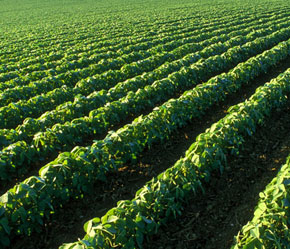Buona Fortuna! Win Free Sandwiches for a Year at Carrabba’s Italian Grill
We are actively addressing our environmental impacts across key areas including greenhouse gas (GHG) emissions, energy consumption, waste management, water conservation, and sustainable packaging. As responsible stewards of our environment, we are working to reduce our carbon footprint and conserve natural resources for future generations. These sustainable practices both support our long-term success and align with our core values.

Conservation
We continuously work to improve energy efficiency, reduce water use and conserve natural resources in our restaurants.

Packaging Innovation
Finding new and more sustainable packaging and supplies for our to-go, catering and dine-in orders is an ongoing priority.

Food Waste
We constantly are refining our business processes and seeking new innovations to reduce reduce food waste in our operations.
Climate & Emissions
We acknowledge our role and responsibility in mitigating our impact on the climate and are actively developing a climate action plan to guide our efforts and achieve our goals. We have set a goal to reduce our direct emissions (Scopes 1 and 2) by 46.2 percent by 2030 from a 2019 baseline, aligned with the 1.5°C pathway. Additionally, we aim to reach net-zero emissions by 2050.
Through improvements in operational and grid efficiency, we reduced our Scopes 1 and 2 emissions in 2024 by 16 percent, as compared to 2019, moving us closer to achieving our goal. We plan to have our 2025 emissions independently verified in 2026. Information regarding data collection methodologies can be found on page 32 of our 2024 Impact Report.

[1] Emissions data for the 2019 baseline year has been restated to incorporate required changes, in accordance with the GHG Protocol. All values reflect market-based emissions. Numbers may not total correctly because of rounding.
[2] The figures in the chart do not include refrigerants, as we are currently refining the estimates. All reported numbers may change as data access and quality improve.
We recognize that actions to reduce emissions cannot be limited to our own operations; we must also take steps to address GHG emissions where they are most challenging, including within our supply chain. Through engagement with our suppliers and our extended supply chain (e.g., food processors and distributors, transportation, and logistics partners, etc.) we are actively working to reduce and mitigate the climate impact of our raw materials.
Energy
Since more than half of our operational emissions come from electricity consumption, we prioritize initiatives that enhance efficiency. Throughout our operations we are working to identify new ways to reduce our carbon footprint, from evaluating more efficient kitchen equipment to exploring emerging renewable energy solutions.
Energy Efficiency
We actively implement energy-saving strategies to reduce our overall consumption. A key initiative has been the widespread adoption of LED lighting in our restaurant network, making it standard in new establishments and progressively upgrading existing locations. We've also invested in high-efficiency equipment, including smart thermostats, modern HVAC systems, and energy-efficient kitchen appliances, to further minimize our energy footprint.
Water
Water is a vital shared resource, and we are committed to conserving it through efficient practices and advanced equipment. We use low-flow faucets and dishwasher spray nozzles, improved our floor care plan to minimize water use while maintaining cleanliness, and encouraged running full loads in dishwashers. We also have new processes for washing floors and inspecting for leaks to reduce our consumption of water.
To identify areas with the highest water risk, in 2024 we conducted a risk assessment of our corporate-owned restaurants in the U.S. using the World Resources Institute (WRI) Aqueduct tool. This information will help us prioritize water conservation initiatives across our restaurants.
In addition, we work alongside our suppliers to understand how water management is approached across the industry. By the end of 2024, 67% of our land-based protein comes from suppliers that have measures to reduce water consumption, and have taken actions to recycle or reuse water.
Waste and Packaging
We view waste reduction as a cornerstone of our environmental stewardship, focusing on enhancing recycling initiatives, promoting responsible waste management, and minimizing landfill-bound waste.
Our commitment extends to the environmental impact of our packaging by minimizing single-use items, enhancing recycling efforts, and developing innovative, sustainable solutions.
Our objectives are to:
- Reduce overall packaging at each location
- Strengthen our recycling initiatives
- Champion sustainable packaging solutions over the next three to five years
We're proud that in 2024, 90 percent of our carryout packaging was recyclable or reusable, including paper bags made from 100 percent recycled content. We also empower our customers to participate in our sustainability efforts by offering the option to decline plastic cutlery and straws.
Food Waste
Bloomin' Brands is dedicated to reducing food waste through strategic initiatives and partnerships. We focus on reducing the waste generated in our restaurants and kitchens and through our purchasing decisions. We envision a global food system where all edible food is consumed, our systems work to fight food insecurity, and food waste emissions are no longer a significant contributor to climate change.
We are committed to aligning with the EPA and USDA’s goal of reducing food loss and waste by 50 percent by 2030. From 2015 through 2024, we reduced our food loss and waste by 49%. This achievement is the result of initiatives such as:
- Food waste prevention: We also provide our Team Members with resources and expectations for preventing and handling food waste generated in our kitchens
- Donating edible food: Over the past decade, we have donated over 14 million pounds of food through the Harvest Program, which links restaurants with local organizations in need
- Composting: We have started working with local companies to downcycle food waste and divert it from landfills at multiple restaurant sites

